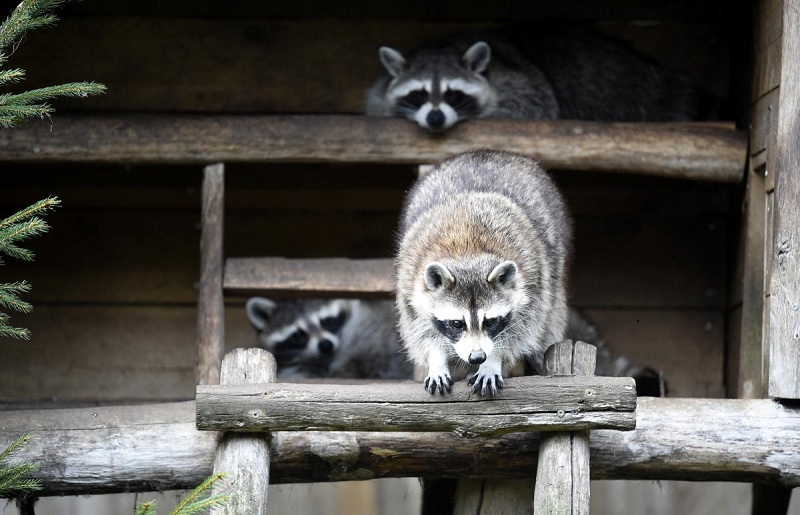The generation of millennial is more daring for the choice of pets; therefore city apartments and private houses often contain exotic animals. You can make a python, Fredka, fenek, sugar possum or raccoon. The last animals are quite unpretentious; differ in the makings of socialization. How to keep a raccoon at home, we now tell.
Features of maintenance and care
To begin with, the raccoon needs space, but it will not move freely around the apartment or house. These predatory mammals are not capricious, but they can seriously damage the apartment, personal belongings, and decorations of their owner. All walks in the territory are carried out under the strict supervision of the owner, for a comfortable stay the raccoon needs:
- A spacious cage or aviary with good natural ventilation and a bottom covered with sawdust:
- Toilet (standard tray for cats or small breeds of dogs);
- Feeding trough and container with clean water.
Experts recommend allocating a separate room to a raccoon, but if this is not possible, then it is worth creating a large house (cage or aviary with an area of 1×1 m and more).
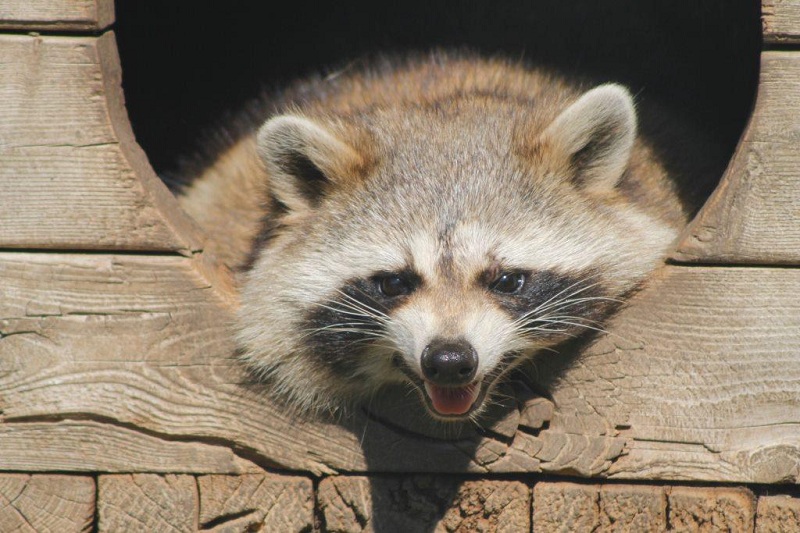
Should I start a raccoon in an apartment or a private house?
For keeping a raccoon at home, it is worth stocking up, because the animals are characterized by increased curiosity, they easily climb on high ground; they love to open cabinets, jewelry boxes and turn flower pots. Because of this behavioral feature, all cabinets and doors that can be opened should be fixed with duct tape. It is recommended to remove sharp and dangerous objects, household chemicals, and drugs. It is necessary to close the raccoon due to the fact that it can gnaw the wires, open the taps with water or the gas valve. He also adores water, erases everything he can – from the owner’s things to the cats. The main negative traits of the raccoon character include:
- Moodiness,
- Jealousy,
- Vindictiveness
- Touchiness
- Excessive curiosity.
Negative traits negate the positive because raccoons are faithful animals, they become true friends, they are affectionate towards children. Another plus is cleanliness! A raccoon can spend in the water up to 3-4 hours a day so there will be no unpleasant odors, which distinguishes it from rodents and even dogs. However, cleanliness sometimes comes to the extreme: the animal can decompose the contents of the trash can in the kitchen, wash the rug or mix perfume with cosmetics.
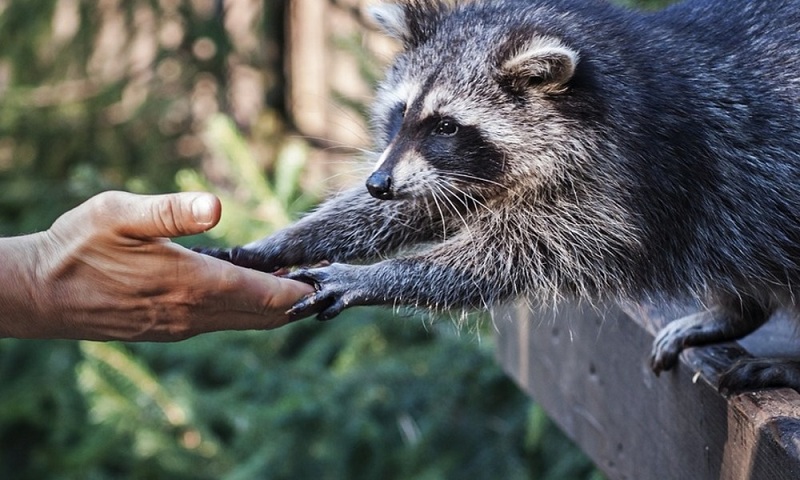
Rules of education at home
Raccoons are driven by instincts, so it is necessary to satisfy some of the needs of a pet, which will help wean him off bad habits.
- Provide free access to food and water; indulge the raccoon with treats so that it stops hiding food behind the couches, in cabinets and other secluded places.
- Teach your pet to go back to the cage: let it go for a walk around the apartment slightly hungry, then put a treat in the cage, the aroma of which will make the animal return to the aviary.
- Build a cozy nest for the animal; otherwise, it will hide in different places in search of solitude.
- Call the baby’s name loudly during games and feeding – he will quickly get used to it.
- The raccoon can slightly bite; from a young age teach him the words “no” or “no”. These words can also be used to disaccustom a raccoon to attack other pets, such as a cat or a dog.
- Stroking the animal and talk to him at the time when he eats, otherwise poluskun will show aggression.
- Raccoons are amenable to training, so you can safely teach them popular commands: “Sit”, “Lie”, “Ko me” and others. As a reward, use goodies.
Choosing an animal, look for a young individual, because an adult raccoon is very difficult to teach to keep in a cage. Kids also feel sad at first, but get used to it quickly, but adult poloskuny behave aggressively, can be angry with the owners who have closed them in the aviary. Note that raccoons can be transported in carrying.
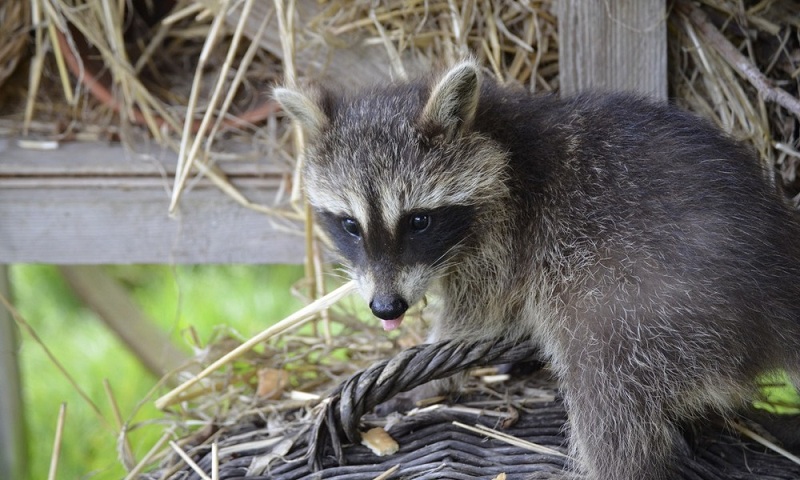
Features of living with other pets
Raccoon, which is kept at home, needs attention, especially for individuals who have not entered puberty. If you do not raise the animal from childhood, it will be aggressive and inhospitable. With young animals you need to do at least 3-5 hours a day, they are individualists, and even predators, so they get along badly with other pets. However, a raccoon can get along with both the cat and the dog – it all depends on nature, conditions of keeping and raising the animals.
Important! The raccoon cannot coexist with birds and rodents. The fact is that a predator, driven by instincts, can eat a mouse, a hamster, a parrot, and other small animals that they gather to feed on in the wild.
Nutrition
The raccoon is omnivorous! He is happy to eat fruits, vegetables, lean meats, as well as cookies, sweets and other delicacies with which he can indulge his hosts. Natural food is a priority, although, during travel or emergency situations, you can offer your pet dry food (varieties for cats and dogs). The bases of the diet of raccoons are the following products that the animals eat with pleasure:
- Chicken and quail eggs;
- Lean meat (chicken, veal);
- Cereals;
- Nuts and fruits;
- Different types of vegetables.
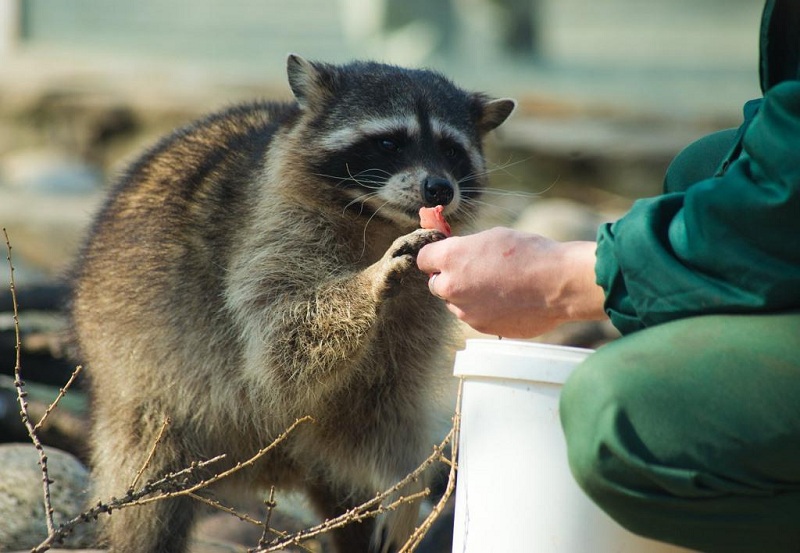
It is necessary to feed a pet at home 3 times a day, giving food at the same time, which will allow forming a regimen. The serving size is calculated based on the age, weight, and height of the animal. Raccoons cannot be overfed – obesity significantly reduces the life of animals. You can not give them salty, spicy, sour, too hot or cold food, as well as flour products and sweets. The pet itself will tell you what it wants to eat, because if it consumes fruits or vegetables without appetite, then you need to diversify the menu with meat or eggs containing animal protein. Please note that these products cannot be subjected to heat treatment, but in this case, more frequent use of anthelmintic drugs is recommended.
Important! At the end of summer and autumn, the animal eats food more actively, because during this period it accumulates fat and prepares for winter. In the early spring and summer, the appetite is low, and the pet may even lose weight – this is the norm if the animal is active and fun, then you should not worry!
Hygiene
If you decide to keep a raccoon at home, then you need to regularly recruit a mini-bath for it, using a deep wash. He will actively splash in warm water! Bathing with shampoo is carried out no more than 1-3 times a year, but cleaning the toilet (tray) should be done 1-2 times a day.
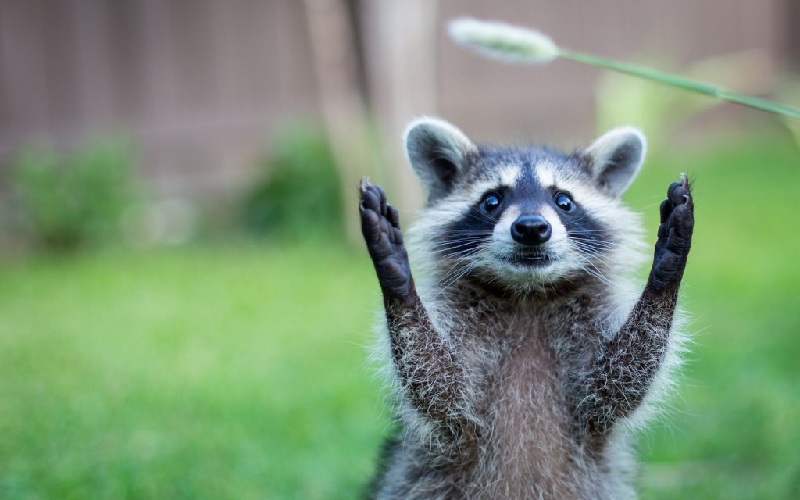
Now you know how to properly care for a raccoon at home. We hope that our advice will help you to tame this cunning, but a very affectionate animal.

